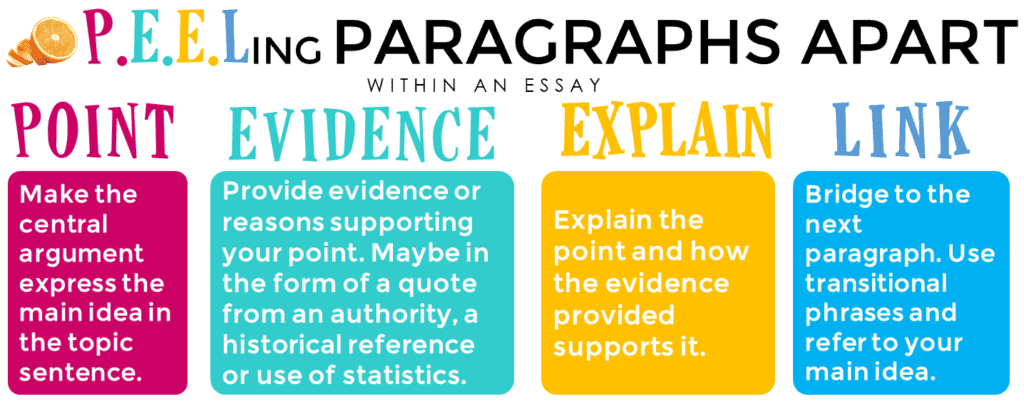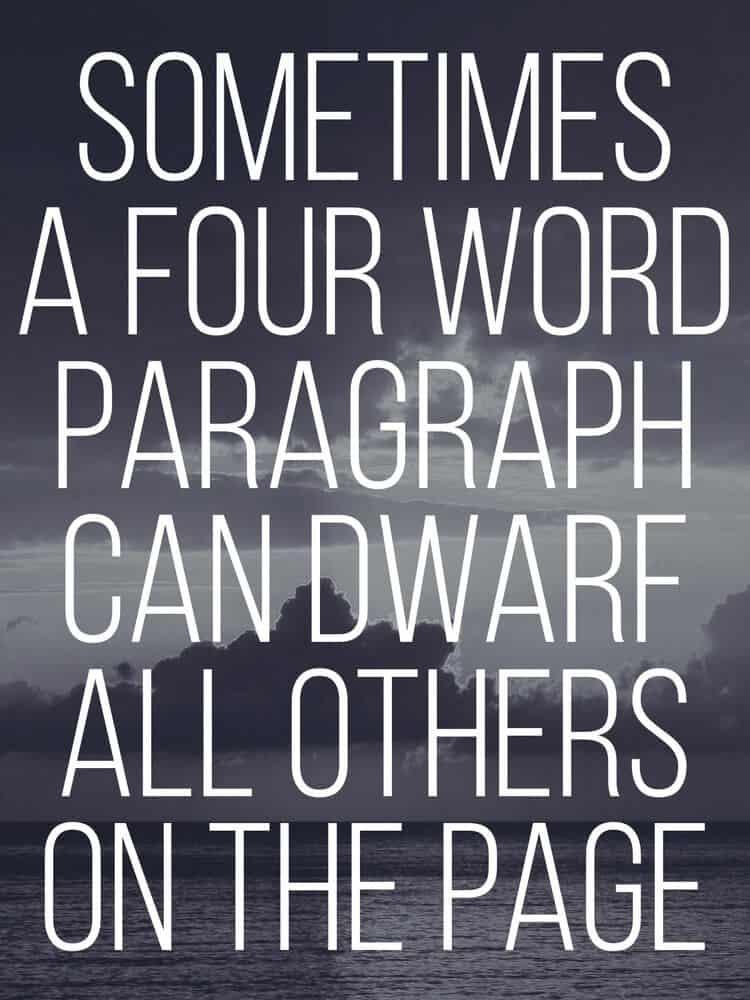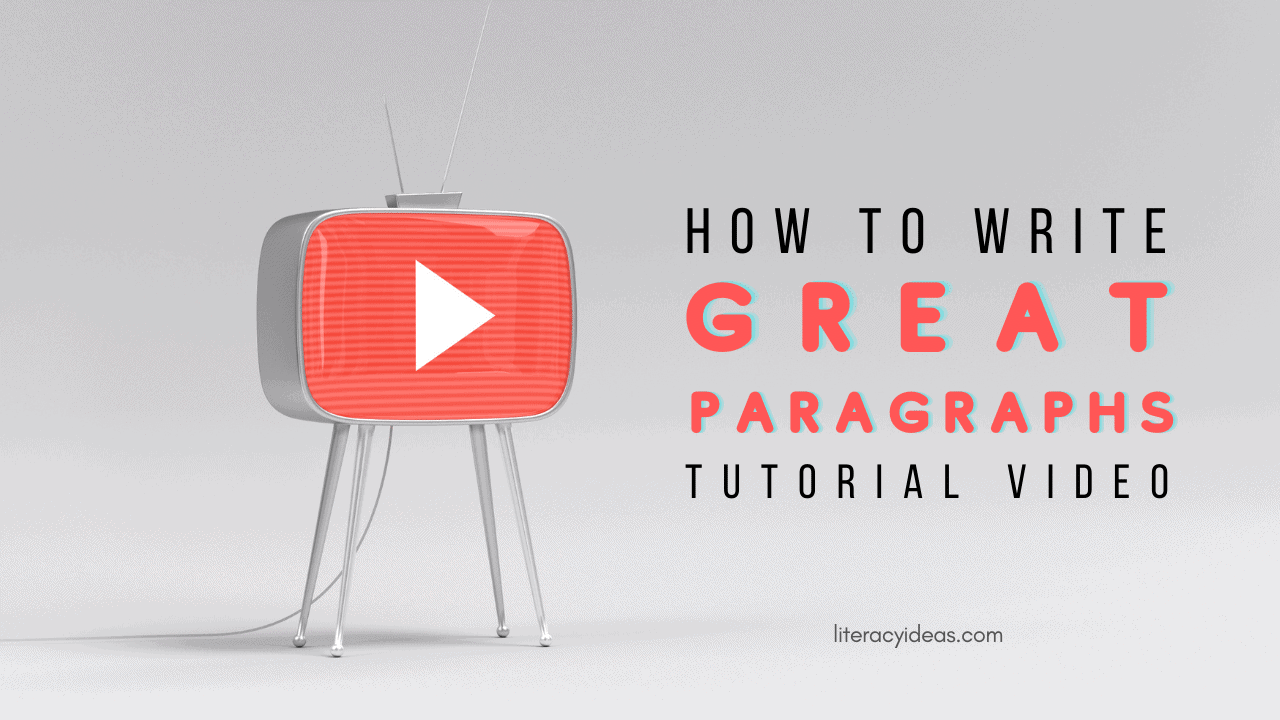
Perfect paragraph writing is easy
A glance around any shopping mall crowded with teenagers on school break would suggest that our young people spend a reasonable amount of time writing. Sure, most of this writing is done with their thumb on a screen, but it’s still writing.
Yes, but tapping out a 280-character Tweet isn’t the ideal route to constructing well-organized writing pieces. To prepare our students to write coherently, they need to understand how to organize their ideas on paper. The ability to write strong paragraphs is an essential part of this.
Unfortunately, recent studies show that surprisingly few college graduates can achieve this, despite writing and communications skills being the most requested job requirements across all industries – including engineering and IT. Clearly, there is a pressing need for a strong focus on writing skills in the classroom.
For the most part, we live in a post-illiterate world. We can all read and write. This is undoubtedly a great thing, but it can lead to complacency for some of our students. At times there is an unwillingness to learn the craft of writing. A reluctance to learn how to organize writing in favor of just plunging in. The cost of this devil-may-care approach is, most often, clarity and coherence.
Fortunately, teaching what appears to be an apparently amorphous skill, such as writing, can be broken down into transparent step-by-step processes, and this includes how to write well-structured, coherent paragraphs.
BE SURE TO READ OUR COMPLETE GUIDE TO SENTENCE STRUCTURE
Before you can master paragraph writing, you will need a good understanding of constructing meaningful sentences.
We have a complete guide to sentence structure for teachers and students. Click here to view.
WHAT IS A PARAGRAPH? A DEFINITION

To teach our students how to effectively write paragraphs we need to clearly define what a paragraph is. Assuming your students understand how to construct a solid sentence, paragraphs are the next step to creating a lucid piece of writing. They are the main building blocks in the construction of a comprehensible text.
Paragraphs are a group of single sentences united by a single topic or idea that help keep writing organized. They help the writer organize their thoughts during the writing process and further help the reader follow the thread of those thoughts in the reading. How paragraphs are used will depend, to some extent, on the genre of writing the students are engaged in, but any piece of writing longer than a few sentences will generally benefit from being organized into paragraphs.
A simple way to help students to recognize paragraphs is to have them count the number of paragraphs on a page, either in a book or projected onto the whiteboard. Have them note too, that there are two ways to delineate a paragraph: indentation or skipping a line. Both methods are fine, just ensure the student chooses one method and sticks to it. If you indent there is no need to skip a line – and vice versa.
Writing starts with planning. It’s a bit like gazing at a beautiful cathedral or temple we visit on vacation. Once it was obscured by scaffolding and busy workers that were eventually peeled away to reveal the beauty beneath. The planning stage of writing serves the same purpose as architectural blueprints, that is: to foresee the problems of construction and solve them before building begins. It is often helpful to consider paragraphs as distinct units in the planning process. Now, let’s take a look at the structure of paragraphs and how they work.
HOW TO STRUCTURE A PARAGRAPH
The three-part structure of an essay – introduction, body, and conclusion is echoed in the underlying structure of most paragraphs. There are two concepts essential to understanding in the writing of the perfect paragraph:
i. Thesis Statement: The thesis statement represents the main idea of the text as a whole and usually occurs in the opening paragraph.
ii. Topic Sentence: The first sentence of each paragraph thereafter usually introduces a single central idea in support of the previously mentioned thesis statement.
The topic sentence also serves the purpose of unifying the other sentences in the paragraph, while further setting up the order of those sentences. While the majority of paragraphs will contain a topic sentence and that topic sentence will come first, there are, as always, some exceptions. A narration of the sequence of events may not require the use of a topic sentence or changing paragraphs because of a change of speaker in dialogue, for example.
Subsequent sentences following the topic sentence should all relate back to the topic sentence and either discuss the point raised or support that point through the provision of evidence and examples. A good acronym that conveys this is P.E.E.L.

Point: Make the central argument or express the main idea in the topic sentence.
Evidence: Back up the point made by providing evidence or reasons. Evidence may take the form of quotations from a text or authority, reference to historical events, use of statistics etc.
Explanation: Explain the point and how the evidence provided supports it.
Link: Provide a bridge into the next paragraph at the end of the current paragraph by using a transition that links to the next paragraph and the main idea or thesis statement.
WHEN TO BEGIN A NEW PARAGRAPH

One of the more common difficulties for students is to recognize when it is time to begin a new paragraph. This often occurs because the student fails to distinguish between the thesis statement and the topic sentence. While the thesis (or more broadly, the theme) will remain consistent throughout the piece of writing, each paragraph should focus on a different point in support of that thesis.
Another useful way to determine when to start a new paragraph is to note that a new paragraph is necessary when there is a change of focus on a:
Person: This could be a character in a story or an important figure in history, for example. This could also refer to a change in speaker when writing dialogue. When there is a significant shift in focus from one person to another in a piece of writing, it’s time to indent or skip a line!
Place: As with a changing focus on a person, a shift from one location to another is most often best noted with a corresponding change in paragraphing. Instruct students that a move to a new paragraph in their writing is symbolic of the physical change of place – this will help them remember to start a new paragraph.
Time: Important shifts in time most often require a new paragraph too. These changes in time may be a mere matter of minutes or a significant movement through different historical periods. If the change in time opens up new material to the reader, students must mark this in their paragraphing.
Topic: Though usually united by the thesis statement or similar, a piece of writing will often explore clearly differentiated topics in its course. Usually, these topics will become apparent during the planning process. Each clearly identified topic will require at least one dedicated paragraph.
HOW LONG IS A PARAGRAPH? / HOW MANY SENTENCES IN A PARAGRAPH?
The question of how many sentences are in a paragraph, or how long is a paragraph is a common one. Unfortunately, there is no definitive answer to this question as quality paragraphs are measured in the ideas and concepts addressed rather than sentences and word counts.
Analytics of millions of paragraphs tell us that most paragraphs are approximately 100 – 200 words in length and are made up of 3 – 5 sentences but it must be stressed that this is purely a statistical coincidence and nothing more.
Excellent paragraphs can range from 12 words to 12 sentences when written correctly as you will discover from this guide.
HOW TO WRITE AN INTRODUCTION PARAGRAPH

Your introductory paragraph should contain the thesis statement. The Thesis statement usually appears at the middle or end of the introductory paragraph of a paper, providing a concise summary of the main point or claim of the piece of writing.
Your thesis statement should not exceed one sentence and is a guiding light for your essay or piece of writing.
The last sentence of an introduction paragraph should also contain a “hook” driving the reader to the next paragraph and onwards throughout your piece of writing as a whole.
HOW TO WRITE A CONCLUSION PARAGRAPH
The purpose of your conclusion is to wrap up your piece of writing as a whole. In your conclusion, you should summarize what you initially stated in your thesis statement without just repeating it word for word.
Your conclusion is not the place to bring up new ideas or evidence which should have been addressed before this point. In some instances, though you may raise questions or direct your reader to reconsider a specific aspect of your writing in an effort to challenge their thinking beyond this point. This is common practice in persuasive writing and some narrative styles such as mystery writing.
The final sentence of your conclusion will leave a lasting impression on your audience so never rush or disregard it. It is one of the most important sentences you will write.
Be sure to read our complete guide to writing a conclusion paragraph here.
TOP 5 TIPS FOR PARAGRAPH WRITING
● Consistency is Key – Encourage students to be consistent in their verb tenses and point of view. For example, shifts from the past tense to present tense without good reason can be as disorientating as time travel itself.
● Use Transition Words and Phrases – These words and phrases are a great way to link concepts and ideas within a paragraph, as well as helping to form a bridge to the next paragraph. Some useful transitional words and phrases include: although, in spite of, therefore, for this reason, as a result.
● Employ Parallel Structures: Using parallel structures brings flow to a piece of writing, making it easier to read and understand for the reader. Parallel structures involve using two or more phrases or sentences that use the same parts of speech and grammatical structures. Not only does this make the writing easier to read, but it also helps the reader make connections between ideas.
● Breathe Life into the Writing: We often forget that the origins of the written word lie in speech. We lose a lot of the color and expression of the spoken word when we lay it out cold on the page. Fortunately, students can breathe life back into their words with a few simple techniques. Encourage your students to imbue their writing with color and vitality by weaving anecdotes, verbal illustrations, rich details, and facts and figures throughout their writing. Judiciously chosen, these techniques will have their writing rosy-cheeked in no time!
● Edit and Proofreading: Unlike speaking, with writing you get more than one bite at the verbal cherry. Writing is a craft and like any craft, some refining is required. Ensure your students take the time to polish their final draft.
WRITING CHECKLISTS FOR ALL TEXT TYPES
⭐⭐⭐⭐⭐ (92 Reviews)
TO PERFECT THE PARAGRAPH – PRACTICE!
Clarity comes from organization and without the ability to organize their own thoughts prior to writing, students will not be able to coherently express their thoughts and ideas to their readers. It is essential that students develop a clear and consistent approach to paragraph writing that is repeatable. This can only be attained through lots of practice – which means lots of writing.
However, the principles underlying strong paragraph writing can also be reinforced through reading. Take the opportunity to reinforce good writing practices when engaged in classroom reading activities too. Repeatedly identify, and have students identify, the concepts and techniques discussed above until they become second nature. The more familiar students become with these concepts, the more they will naturally permeate the student’s writing. Getting a firm grasp on the mechanics of paragraph writing will make their communication much more effective. A skill that is hard-won, but easily carried.







